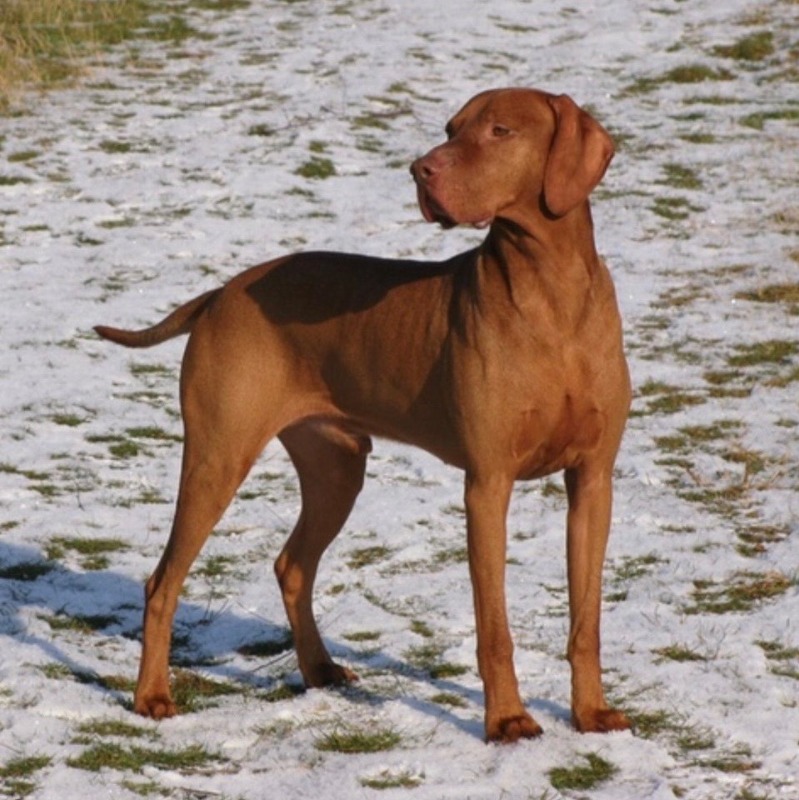Breeds
Hungarian Vizsla

GROUP 3 - GUNDOGS
Brief History
The Vizsla is the national dog of Hungary. Its early origins are hard to trace, but its history probably began in the ninth century. The Vizsla was owned by Hungary’s sporting nobility and before firearms were introduced in the 1700’s, was used to scent and search for birds that were then either caught by falcons or netted. An all-purpose gundog, the Vizsla could hunt, point and retrieve both feather and fur on land or from water. Few survived the wars in 20th Century Europe, but during the Russian occupation, many nationals fled Hungary with their dogs, and the breed subsequently became established over a wider area of Europe. They eventually arrived in other continents, with the first Vizsla coming to Australia from the UK in 1973.
Average Life Span
When considering a dog, please realise that you are taking it on for its lifetime.
The average life span is 10 to 15 years.
Temperament
Vizslas are alert, playful, sensitive, easy going companions. They are high energy, active dogs that need regular exercise and mental stimulation. They may be initially aloof or wary of strangers, but they watch rather than guard. Young puppies can be overwhelming to children.
General Breed Description
This is a medium sized, elegant, multipurpose gundog of noble appearance with a distinctive short, russet gold coat. A demonstratively affectionate and lively dog, he is happiest when fully involved in family activities. As well as working in the field, the versatile Vizsla competes in a variety of dog sports, including Obedience, Rally, Tracking, and Conformation dog shows.
Coat and Care Requirements
The Hungarian Vizsla has a short, dense coat which is coarse and hard to the touch. The single coat requires minimal grooming, just an occasional bath or wipe with a damp cloth. However, as the Vizsla does shed, especially between seasons, more frequent brushing is advisable at those times.
Size
Height: Males 58 to 64cms, Females 54 to 60cms.
Health
All breeds have individual health issues. When speaking to breeders it is recommended you enquire about the breed’s health and what health testing the breeder does. The Hungarian Vizsla is generally a healthy breed, however health conditions do occur occasionally. These may include Hip Dysplasia (HD) and Elbow Dysplasia.
Suitability
This is not a dog to be left alone in the backyard as it can become destructive if bored. The ideal owner is someone who is active and willing to put time into training and who wants a loving companion who is fully involved in their home life. Socialisation and early positive reinforcement training is essential. The Hungarian Vizsla learns very quickly and responds well to obedience training, due to his great desire to please. They do require daily exercise, so are best suited to those with an active lifestyle.
In Conclusion
Now you know a little more about this breed. If you have decided this is the dog for you and wish to investigate further, please contact the Breed Club or Dogs Victoria. They will be able to give you information about available puppies and also suggest dog events where you can see the breed and speak to breeders. In this way you will gain a better perspective of the breed and its needs. With any breed of dog, it is important to research and determine suitability for your lifestyle before committing to a puppy which will be a part of your family for many years to come.
Whilst many breeds are recommended for families, it is imperative that when children are with dogs they are supervised at all times. Basic obedience training is a vital part of dog ownership.
Dogs Victoria is about the responsible ownership of all dogs and in particular the preservation of pure breeds.
Link to Dogs Australia Breed Standard: https://dogsaustralia.org.au/breed/detail/74
Breeders






